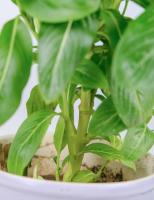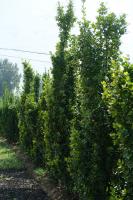Why Would a Fig Tree be Planted in a Vineyard?
Vineyards are typically known for their neatly arranged rows of grapevines, producing delicious wines. However, it is not uncommon to see fig trees planted in the midst of these grapevines. One might wonder why would a fig tree be planted in a vineyard? In this article, we explore some of the reasons behind this unique pairing.
Ancient Practice
The practice of planting fig trees amongst grapevines has been around for centuries. It is an ancient agricultural practice that can be traced back to biblical times. In both the Old and New Testament of the Bible, it is mentioned that figs and grapes were grown together in vineyards. Therefore, it is not surprising to see this practice still being followed today, especially in the Mediterranean regions where it originated.
Soil Conservation
Fig trees have shallow roots that can spread widely, making them excellent soil conservers. In vineyards, the constantly pruned grapevines can cause soil erosion, which leads to the loss of valuable nutrients. The shallow roots of fig trees help to secure the soil and prevent erosion, preserving the health of the soil. This, in turn, helps the grapevines thrive, producing better quality grapes for wine production.
Natural Shade and Protection
Fig trees can also provide natural shade for the grapevines from the scorching sun. The leaves of the fig tree are large and broad, blocking out the direct sunlight and creating a cooler microclimate for the grapevines to grow in. Additionally, fig trees also produce a sticky sap that discourages pests and insects from eating the grapevines. This eliminates the need for harmful pesticides, making the vineyard more environmentally friendly.
Aesthetics and Diversity
Finally, planting fig trees in vineyards provides an aesthetic appeal that is visually appealing. The contrasting shapes and colours of the fig tree and grapevines create a pleasing contrast amidst the monotony of the vineyard. Additionally, the addition of fig trees increases the diversity of the vegetation in the area, supporting a wide range of organisms such as birds, bees, and other insects that contribute to the overall ecosystem of the vineyard.
In conclusion, planting fig trees in vineyards is an age-old farming practice that has stood the test of time. Fig trees provide several benefits such as soil conservation, natural shade and protection for grapevines, aesthetic appeal and diversity. As such, a fig tree is not only a beautiful addition to a vineyard, but it also plays an essential role in the ecological balance of the area.

 how many times do yo...
how many times do yo... how many planted tre...
how many planted tre... how many pine trees ...
how many pine trees ... how many pecan trees...
how many pecan trees... how many plants comp...
how many plants comp... how many plants can ...
how many plants can ... how many plants and ...
how many plants and ... how many pepper plan...
how many pepper plan...






























